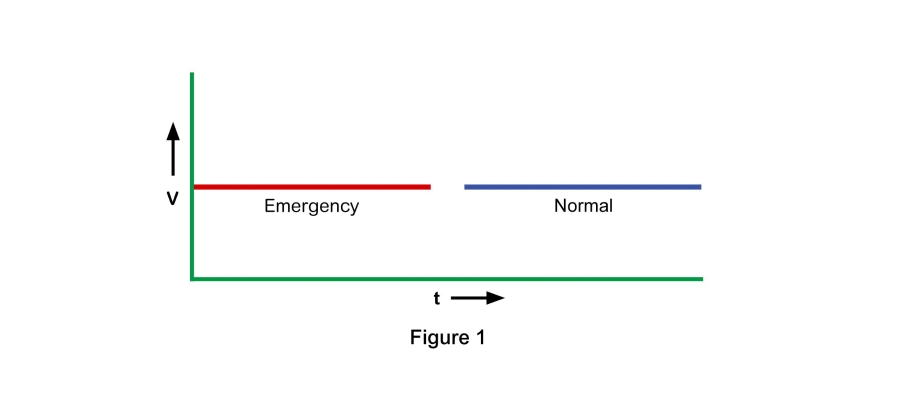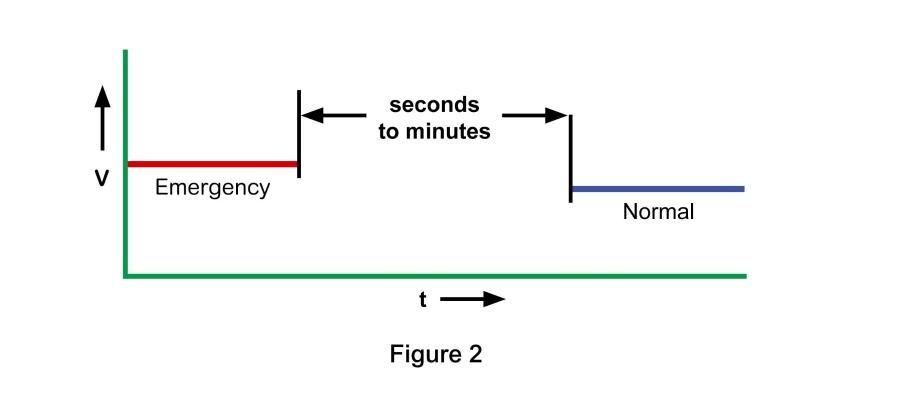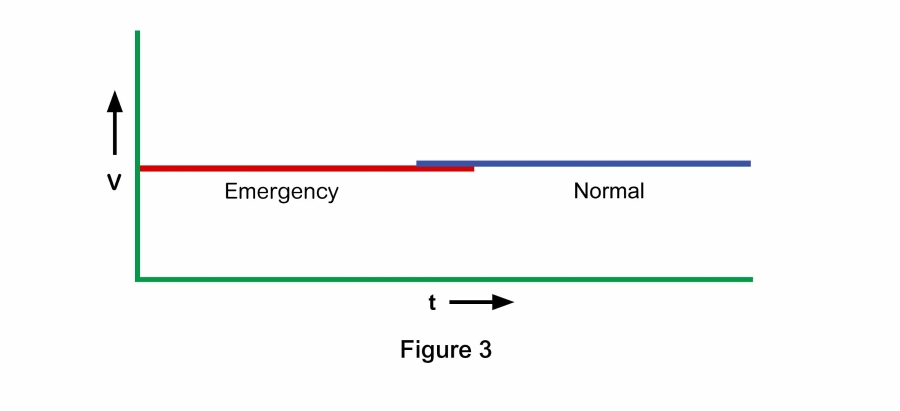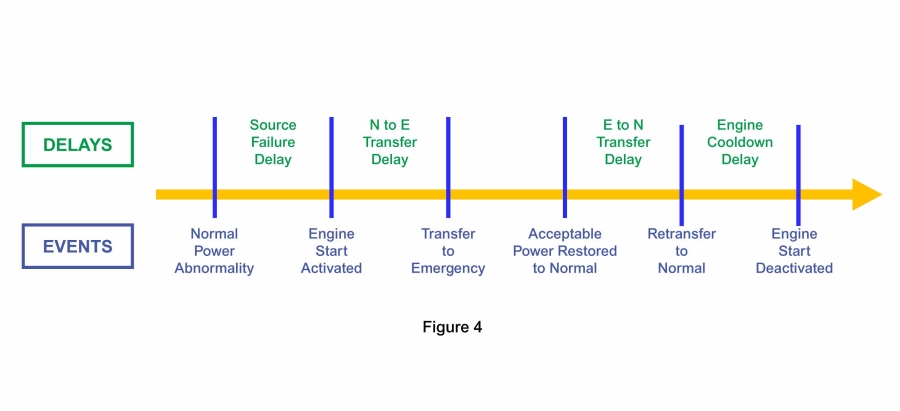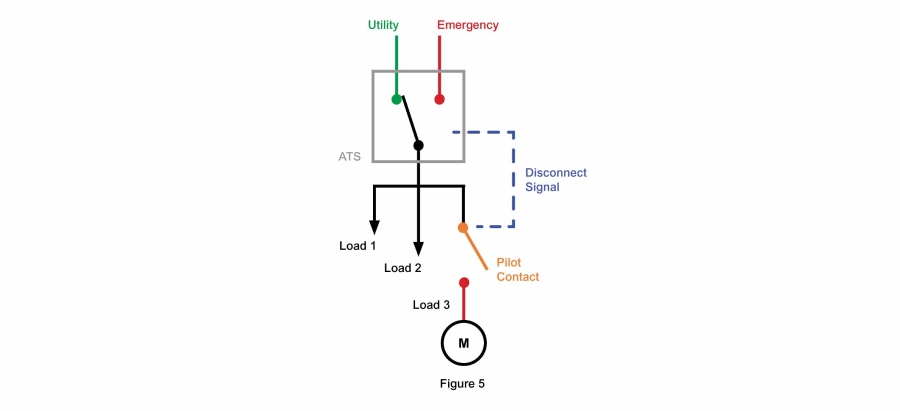Pre- and Post-Transfer Delays are available for Normal-to-Emergency and Emergency-to-Normal transfers. A bypass feature for the Normal-to-Emergency can be employed should the emergency source fail while connected to the power distribution system.
For additional approaches for transferring motor loads, review the ASCO Power Technologies document entitled
Transferring Motor Loads Between Power Sources.
Inphase Transfer Delay
Controllers for ATS monitor voltage and frequency. Some are also configured to compare phase angle differences between sources, then close on an alternate power source only when the phase angle difference is within acceptable limits. This approach mitigates inrush currents attributable to phase angle difference between power sources.
Inphase Transfer Delays are used to set the maximum time for passive phase angle synchronization. If the delay expires, then the controller abandons phase angle synchronization or the switch remains connected to the existing power source.
Commit to Transfer Setting
While the rest of this document addresses delays, there is a relevant transfer switch setting that should be considered when evaluating a delay strategy. A Commit to Transfer Setting addresses what a transfer switch controller should do if the triggering aberration on the power source resolves before a transfer is complete. Its function is best explained by example.
Following an unacceptable voltage reduction, a controller initiates a series of events and delays in preparation for transfer to the alternate power source. While that is happening, voltage on the original source returns to the acceptable range. Should the transfer be completed? Doing so assures connection to a stable power source, but could ultimately be unnecessary if the original power source will actually be stable. Likewise, aborting the transfer avoids potential disruption, wear, and fuel costs incurred by engaging backup power, but could leave the power distribution system connected to a source whose stability is unverified. The Commit to Transfer Setting enables the selection of a default strategy for this circumstance.
DELAYS FOR DELAYED TRANSITION SEQUENCES
As previously explained and illustrated in Figure 2, Delayed Transition Transfer Switches use break-before-make switching to temporarily depower circuits, allowing motor and inductive loads to decay. The amount of time between breaking and making the respective contacts is typically selectable and can range from seconds to minutes. The Delayed Transition Time Delay is the setting that specifies this variable. The duration is usually determined by an engineer’s assessment of the connected loads and their decay times.
DELAYS FOR CLOSED TRANSITION SEQUENCES
Failure to Sync Delay
As previously explained and shown in Figure 3, Closed Transition Transfer Switches momentarily overlap the contacts for each power source during each transfer to avoid power transients. In doing so, the switch controller monitors differences in voltage, frequency, and phase angle to verify passive synchronization between the two power sources. The Failure to Synch Delay specifies the maximum amount of time for allowing passive synchronization to occur. If the delay expires, then the controller abandons the transfer and the switch remains connected to the existing power source, or changes to a delayed transition sequence.
Extended Parallel Alarm
Closed transition sequences must limit normal and emergency contact overlap to protect equipment and avoid safety risks. If a switch malfunctions, the
Extended Parallel Alarm Delay specifies the maximum elapsed time that both normal and emergency contacts can simultaneously remain closed. When this delay expires, alarm contacts change state, the transfer switch controller is bypassed, and an output trips an upstream breaker for one of the power sources to terminate parallel operation. This feature can be set to open either the normal or emergency source breaker.
SUMMARY
The following table summarizes the
automatic transfer switch delays described herein. For additional information, contact an ASCO Power Technologies representative.



